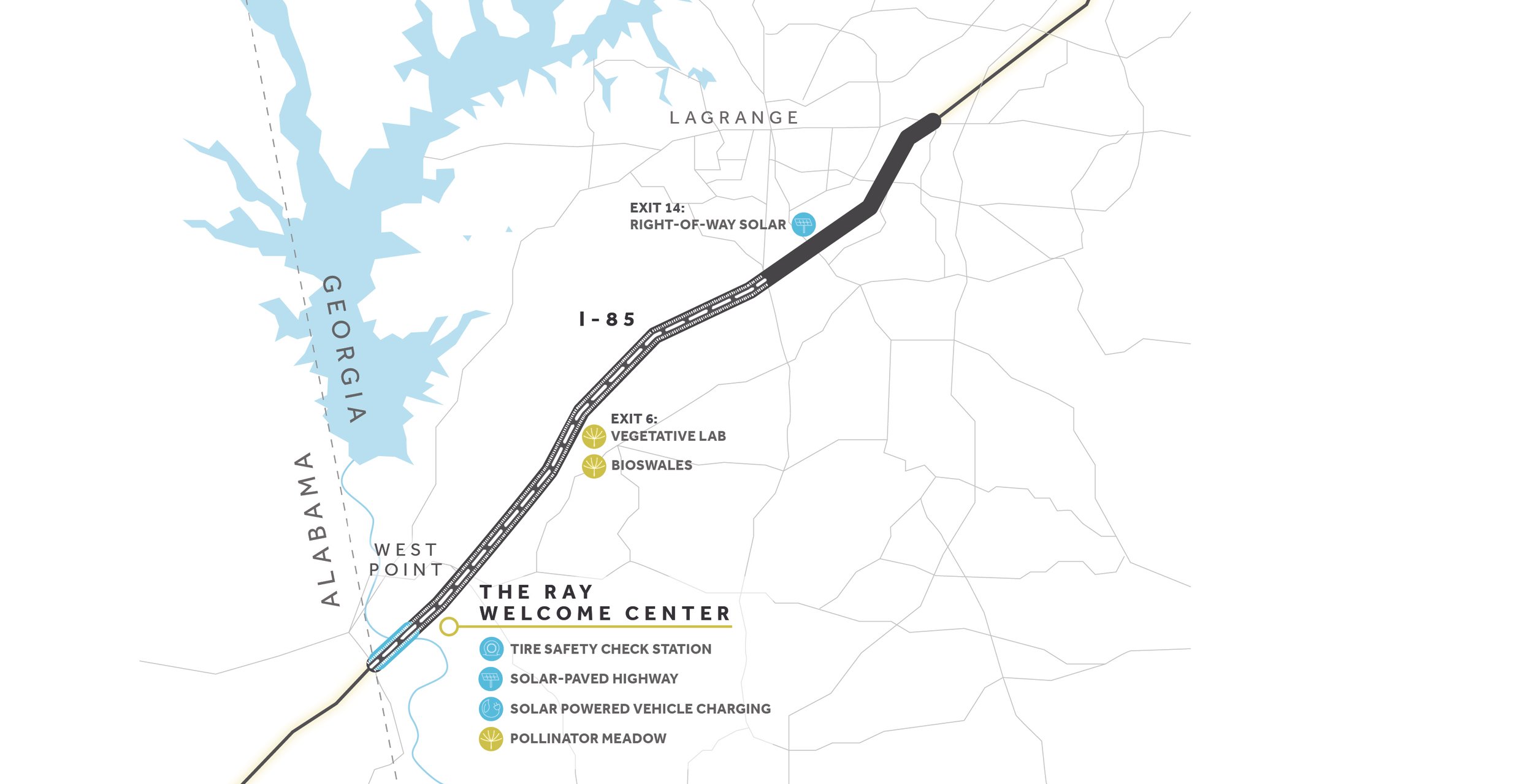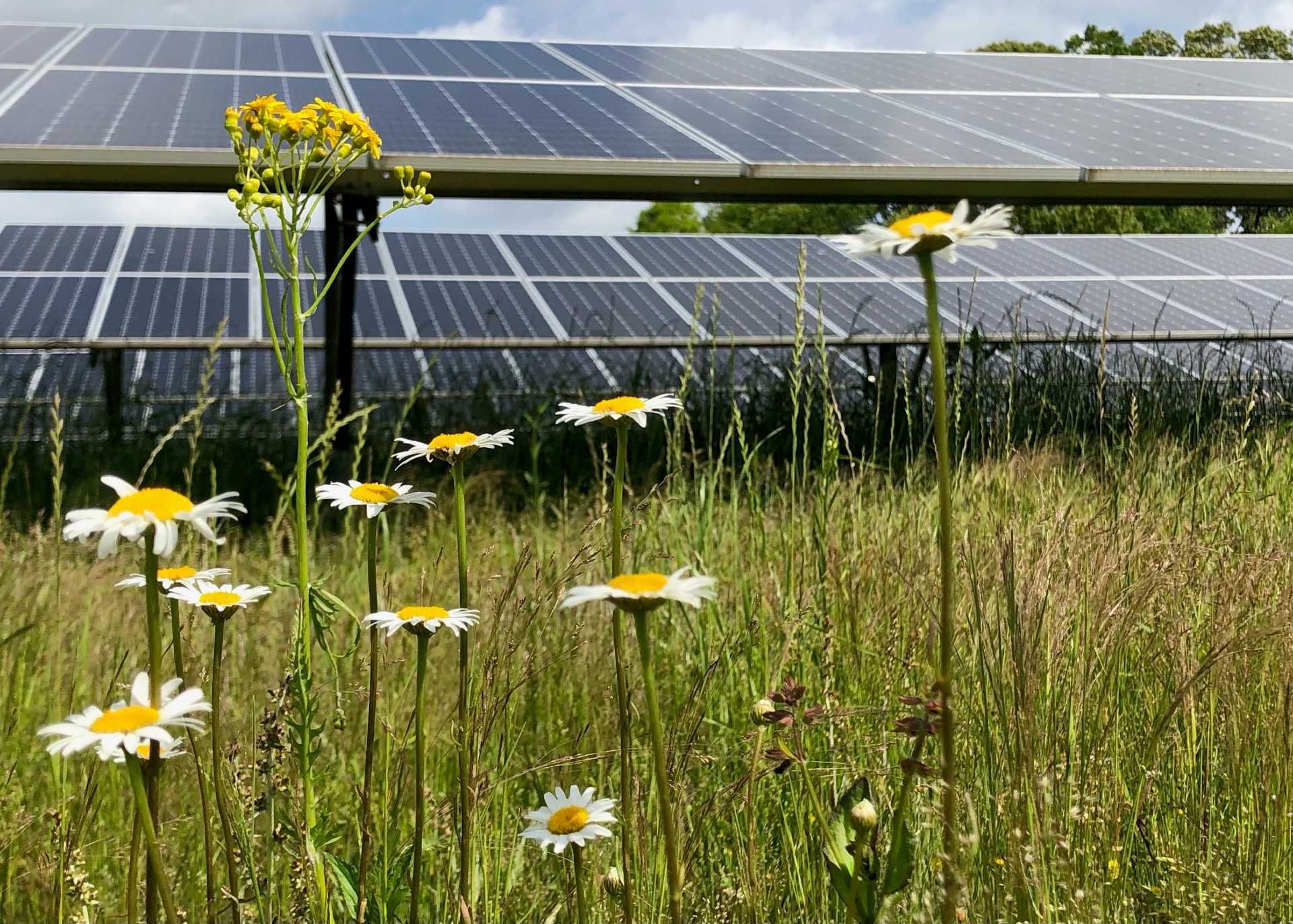
How can we transform a traditional highway into a model of sustainability, safety, and innovation?
The Ray Highway
The Ray C. Anderson Foundation & Collaborators
Highway I-85 from West Point, GA to LaGrange, GA
2015 - Present
Highways are among the most environmentally damaging and hazardous infrastructure systems globally. In 2018, transportation accounted for 28% of greenhouse gas emissions in the American economy, the highest among all sectors. Moreover, U.S. interstates and highways recorded over 37,000 fatalities in 2017.
In response to these challenges, The Ray C. Anderson Foundation and collaborators have turned “The Ray” — an 18-mile stretch of I-85 in West Georgia — into living lab for the future of transportation infrastructure. By testing cutting-edge, eco-friendly technologies that prioritize electric vehicles, smart transportation, biodiversity, and conservation, they hope to identify scalable and replicable ways that will lead to a worldwide transformation of vehicular transportation.
The strategies they are using include:
Providing solar-powered vehicle charging and tire check stations to enhance driver safety and fuel efficiency, the highway features solar-powered vehicle charging and tire check stations.
Including shredded recycled tires in the asphalt to reduce road noise while boosting durability.
Installing solar panels and bioswales alongside the interstate enrich soil, store carbon, generate energy, and capture pollutants during rainstorms.
Planting roadside pollinator-friendly flowers that require less maintenance and mowing than grass in roadside meadows.
-
WEBSITE
The Ray: www.theray.org
VIDEOS
Science for Georgia, “Ride the Ray Highway in Virtual Reality,” 2022.
This virtual reality tour demonstrates technologies used on The Ray Highway.
Green Biz, “The Ray: Can One Highway Drive the Future,” 2017.
The visionary team behind The Ray tells the story behind their revolutionary stretch of IT-embedded roadway in Georgia, "the world's first sustainable highway," and the many innovations and possibilities created on the journey to transform our transportation infrastructure.
BOOKS
Ben Goldfarb, Crossings: How Road Ecology is Shaping the Future of Our Planet, Norton 2023.
An eye-opening account of the global ecological transformations wrought by roads.
Images courtesy of The Ray






